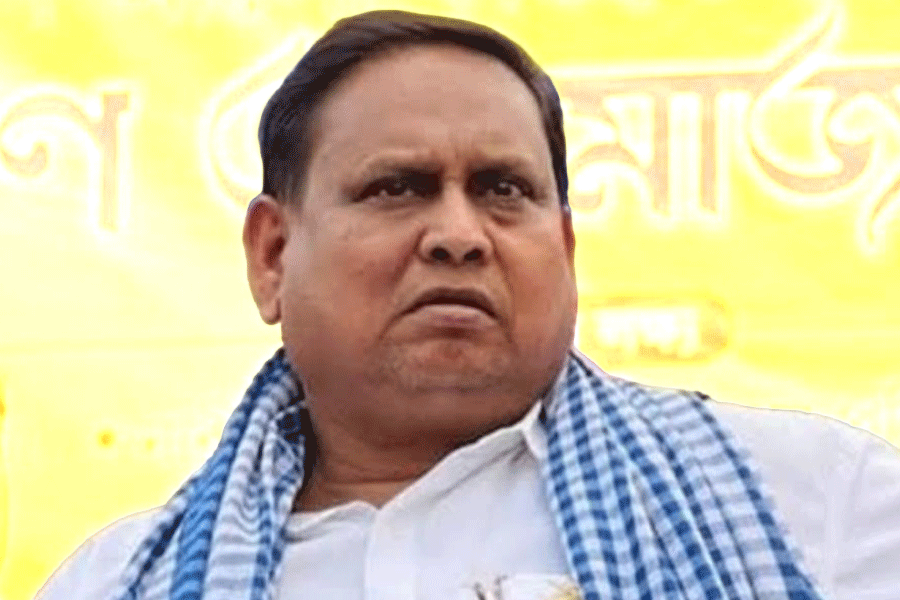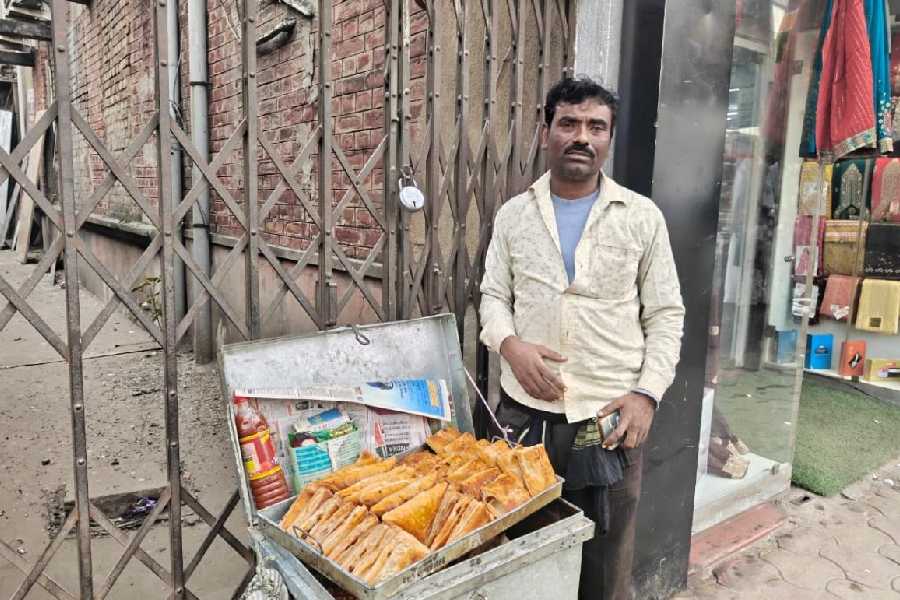Somewhere between asserting the importance of Cheteshwar Pujara’s slow 50s for India’s Test side and drawing a parallel between him and Yudhishtir’s Dharma, cult-favourite mythology writer Amish Tripathi virtually decoded Dharma, with his sister and co-author Bhavna Roy for company. The last time I had met Amish, he was dressed in a T-shirt bearing the cover of one of his books that had just released as he laughed saying: “There’s nothing called too much marketing.” Since that meeting in 2019, he now resides full-time in London as the director of the Nehru Centre and that coupled with Covid and its incessant onslaught ensured that his marketing for his latest book, Dharma: Decoding the Epics for a Meaningful Life is now restricted to the world wide web. However, that, I imagine, is in no way a deterrent for someone who has made mythology attractive to GenY.
In a session moderated by Malavika Banerjee for the Calcutta chapter of Ficci Flo, Amish and Bhavna discussed Dharma, its dichotomy and its relevance today. Excerpts:
Retelling of our epics
Bhavna Roy: For the past 2,000 years, the concept of religion has been caught by the imagination of the external world and this has been the story post the birth of Jesus Christ. Religion has almost become a social reform movement in order to better society and better the lives of people in society. Amish puts it beautifully that the correct Sanskrit terminology for religion is “panth” and the ancient spiritual streams were much larger than religion. Amongst the ancient streams, the Sanathandharma is the only one that has been able to survive and the rest are not lived philosophies anymore. The ancient forms of spiritualism were really about inner life — understanding and decoding their individual selves and then understanding the ones around them.
Keeping with that, our epics have been constantly reinvigorated, refreshed. Valmiki wrote the original Ramayan but there have been so many versions since the past 5,000 years. Amish’s effort is just one more chapter in a continuous stream through millennia.
Amish: There is a primary difference between what are called the Dharmic religions, which are the only ones from the ancient ways to survive and the Abrahmic religion in which faith is very important. In the former, Dharma is more important than faith. Dharma is essentially what keeps the balance and that which binds the universe together. In this way, understanding Dharma is critical. There’s no translation of the English words “judgment” and “blasphemy” in Vedic Sanskrit. This is why, the later versions of the Ramayana, which are the Bhakti versions, made faith much more important. But in the original Valmiki Ramayana, faith is not that important. The fundamental approach changed in the last few years.
Working on Dharma: Decoding the Epics for a Meaningful Life
Bhavna: This project really began in 2014 and it was a dinner-table conversation. Amish had released three of his books then and we were debating the philosophies behind his books. The conversation veered to idol-worship and my brother Anish suggested to the two of us to work together on a philosophy project. I had begun the work and wrote 20 pages. Amish is eight years younger, very respectful and a very Dharmic human being and he very correctly told me that it was extremely theoretical and wasn’t readable. He said he would work on it. Then he created this family of Dharmaraj, Lopamudra, Gargi, Nachiket, interestingly a daughter and son-in-law and not a son and daughter-in-law and he transformed those 20 pages into a dialogue. That brought it to life with debates, arguments, counters and points. He then sent it back to me and it was easy after that. When I created structure, he built the muscle and the flesh and vice-versa. When we had disagreements, we would talk it out and came to a resolution.
It came to a halt about four years ago and then revived again during the pandemic period. Finishing touches and some updating was needed and here it is!
Dharma vs Swadharma
Amish: If you see our ancient stories, the question at the heart of it that our ancestor spent debating is “What is Dharma?”. And why? Because that actually guides how you should live. Our approach was fundamentally different from the faith-based approach because out here is more of the path of wisdom, which means that you have to figure out what is the ideal way of life for you. God is not going to come and give you five rules because if that is the approach however, you are essentially being treated as a child. In the Dharmic way, you are supposed to be the adult — there is no heaven or hell, this earth is what it is. You might go to a temporary purgatory, but earth is where you do your karma and the purpose is to find your release from the cycle of rebirth. So God will not come and judge you. Even the Smritis are very clear that these are rules for these societies but when the societies change, change the rules. Rules are not given by God. If you don’t understand what is Dharma, you will not live a conscious life — you will just be floating through life. Then what is Dharma at a Sanatan level or a Yug (age or era) level?
There was a time when the Dharma of the age was violence — for example, for the Turks. They weren’t Indians speaking Urdu as our Bollywood movies show us. Urdu is an Indian language. They were the military superpowers of the world for 600-700 years. They were skilled at the art of killing. Today is not the age of violence, it is the age of money and the third is the Dharma of your country and society. The deepest level is Swadharma and if that is not in alignment with the Yug Dharma, you have a problem. If your Swadharma is not in alignment with your Kul Dharma, then that’s a problem. You should have a consciousness of all this and yourself so that you can lead a purposeful life. Sorry for the long answer but these are things that our ancestors have analysed for millennia so I thought it deserves five minutes at least.
Realisation of the Dharma of Yudhishtir
Amish: The thing with Dharmaraj Yudhisthir is that he has two parts. His part one is till he is banished to the forest. In part one, he always talks of Dharma but his actions often don’t match up to it. He was addicted to gambling, he bet his brothers, wife and his entire kingdom. But he spoke beautifully. And we have characters like that today who virtue-signal, especially in the West — people who talk a good game but frankly, what are their actions? And many of us who come from the third world see these guys as the most privileged generation in humanity and I wonder what they are so angry about! Yudhishtir part two starts focusing on his actions and that’s when he improves dramatically because when you start focusing on your karma, you realise life is a lot more complicated. He saved so many lives with a lie. Part one showed virtual-signalling but part two was a far better character.
The thing for us to learn is that virtue-signalling does not mean that they are doing any real good work — they’ll post a Tweet about morality and go back to Netflix. People who actually make positive changes in people’s lives know how difficult that is and don’t necessarily go around judging others. So in part two, Yudhishtir actually becomes a Dharmaraj.
Sacrifice, their consequences and the virtue of flexibility
Bhavna: What does listening to your heart mean? Is it about listening to your emotions or is it about listening to the core of your being? The sense of sacrifice can come from a place of ego or a place of alignment, which will be beautiful. In the book, we talked about Bhishmapitama, Kunti and Gandhari. Counterintuitively, if you want to compare these three kinds of sacrifice, we’ll have to ask ourselves: What would have been the result if they had not made the sacrifice? Bhishmapitama would have been the king of Hastinapur, that would have been ideal for the common people and he would have also been an excellent husband and a ideal father. Gandhari would have been a more effective wife by being a better interpreter of her environment if she had not chosen to blindfold herself. Without Kunti’s sacrifice, the Pandavas would have scattered. So it is important to keep the consequences in mind and also the power of flexibility. Ultimately, Dharma is about alignment and balance.










